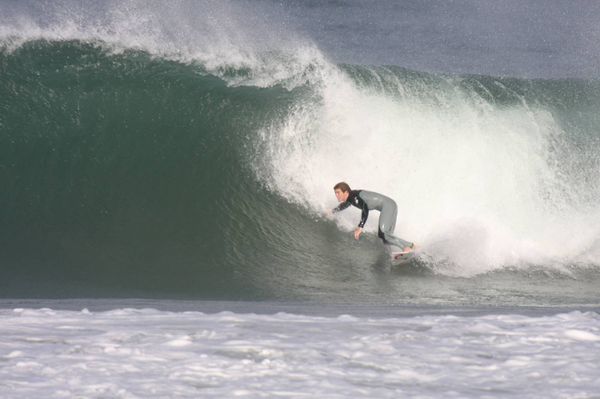Rating the world’s best – Forehand Bottom Turns
Surfers today are judged by their ability to go to the air, display variety, and surf with total commitment. It certainly is taking the sport to new levels of performance, almost into the acrobatic sphere in some surf locations, like Trestles in California, Keramas in Bali, or D’bah in Oz. The spectators love it and so do the surf companies as the imagery in the sport is more spectacular and there is a new sense of the old adage “Going for it” permeating throughout the sport.

So what makes a great bottom turn? As with all surfing moves there is a number of critical component parts, and the bottom turn is no exception. To qualify for a great bottom turn the surfer must have:
– A deep entry into the turn. This is usually displayed by the surfer performing their bottom turn under the foamball as they come around the section.
– a good “set position”, where the surfer compresses their body and leans off their surfboard to get it maximally onto its rail.
– “hold” this set position for a short duration to create stability through the turn and maximally utilize the wave’s power.
– And finally to display “Flow” throughout the performance of the bottom turn
Considering the above, in the men’s division, Fanning probably displays all the qualities of world’s best. Although other regular footers – Slater, Jordy and De Zousa, all come a close second. In the goofey ranks, Owen would get my pick, mainly because of his ability to bend his big frame to generate power off the bottom.
In the women’s ranks, Tyler and Sally are technically superior, with Steph and Carissa lacking ideal compression through the turn, mainly because taller surfers have more trouble bending their bodies. What they lack in compression, they make up for with great leaning during the turn, and overall timing and flow throughout their bottom turns.
In fast down the line wave conditions, or when surfers are focused on getting into the air, the classic forehand bottom turn is not the move of choice. As surfers develop, they learn to recognise when the “classic” bottom turn needs to be performed, and with that, better turns off the top. But if surfers are trying to be the best they can be, focused work needs to be put into creating the best bottom turn possible.
